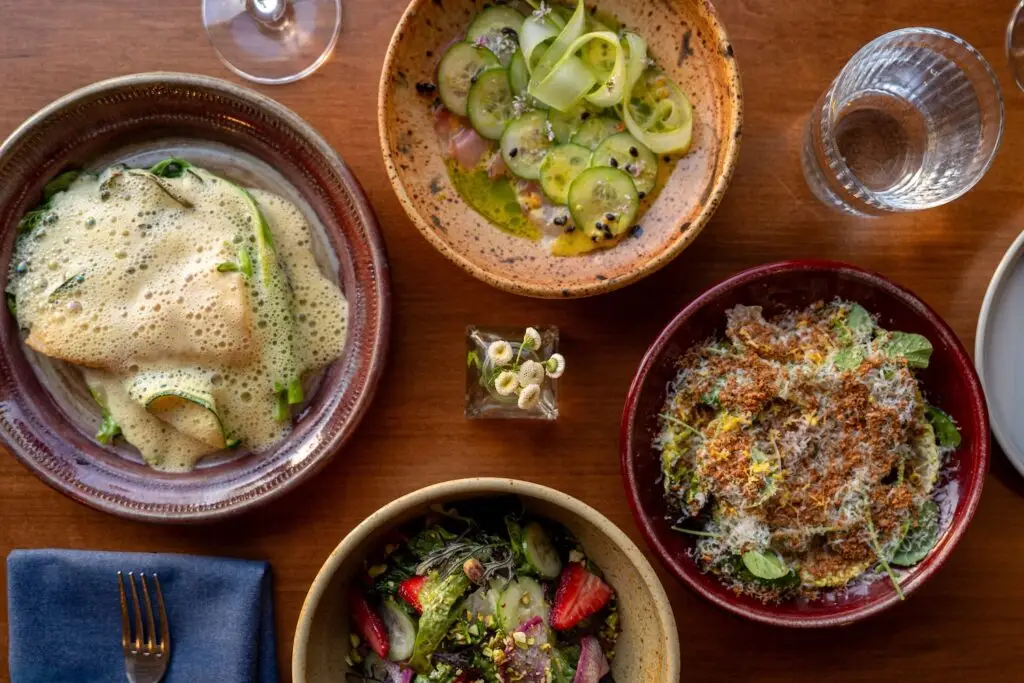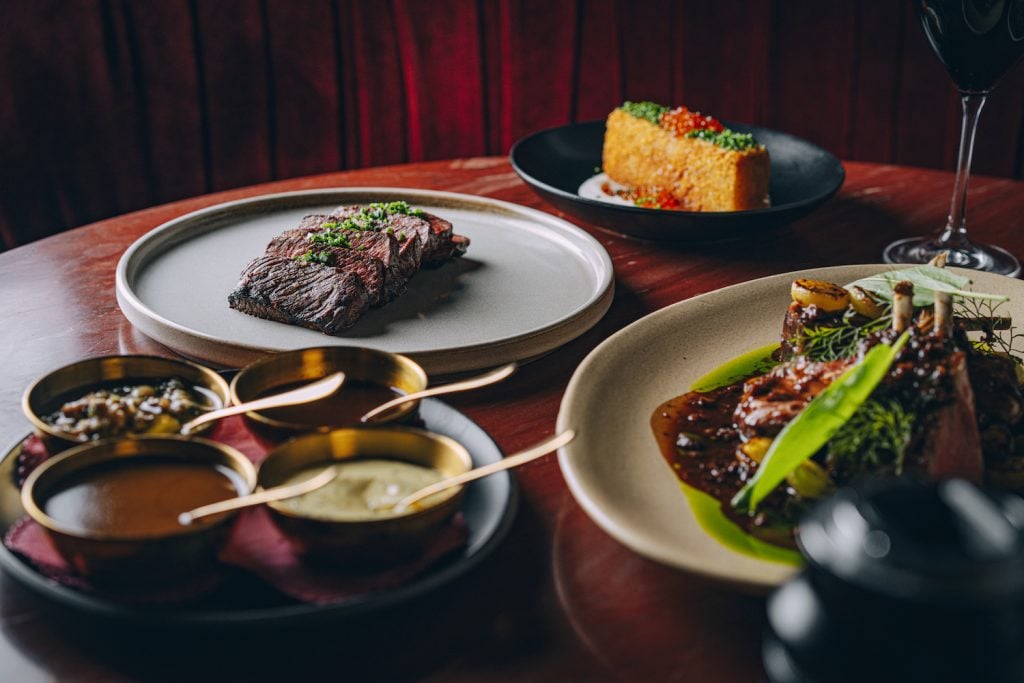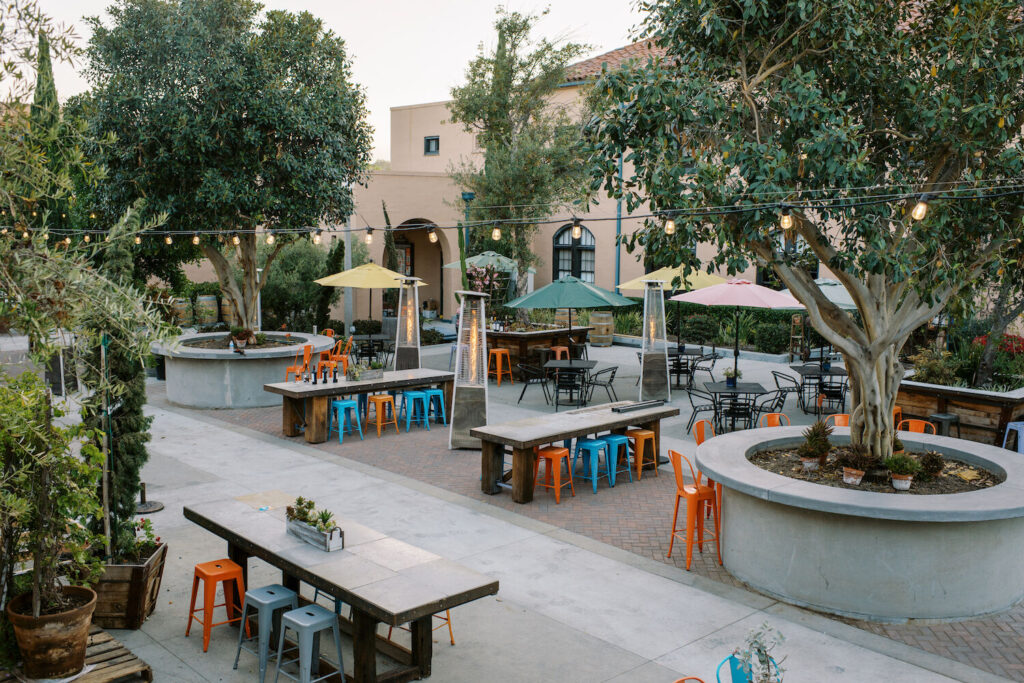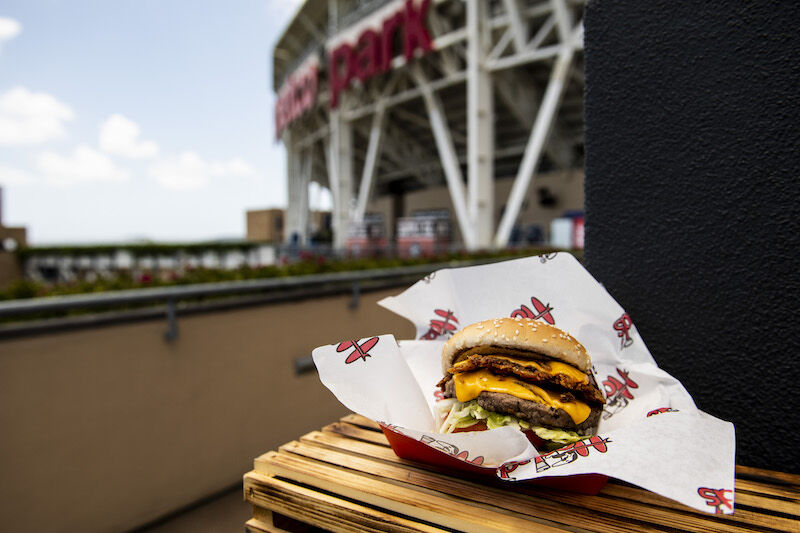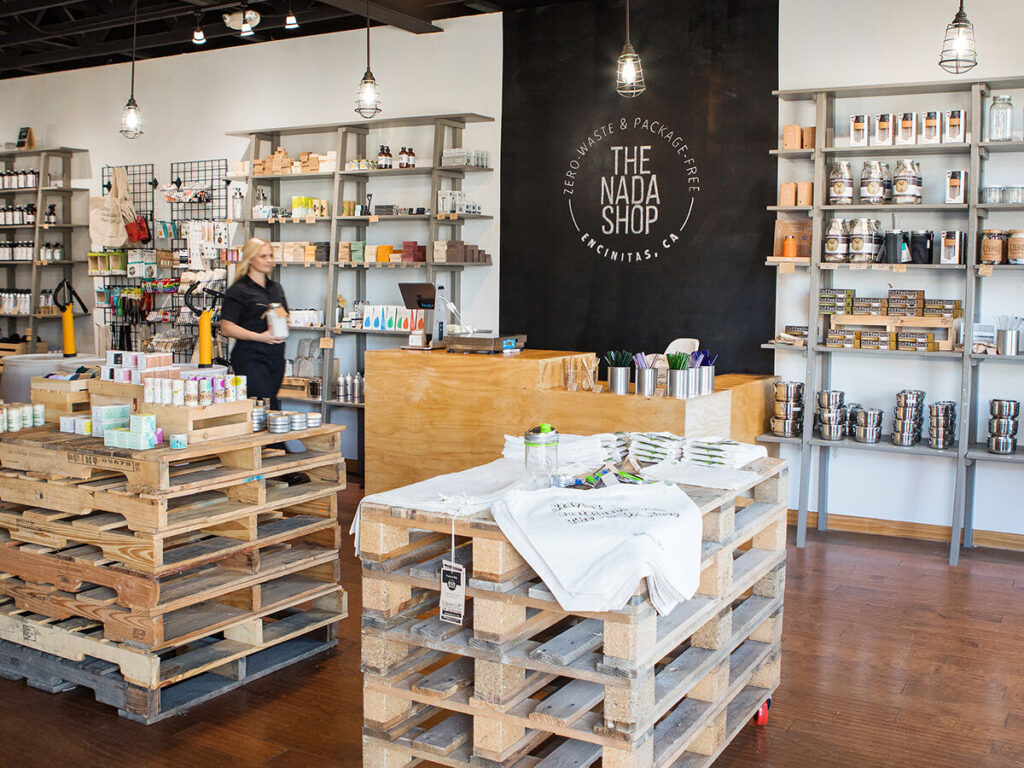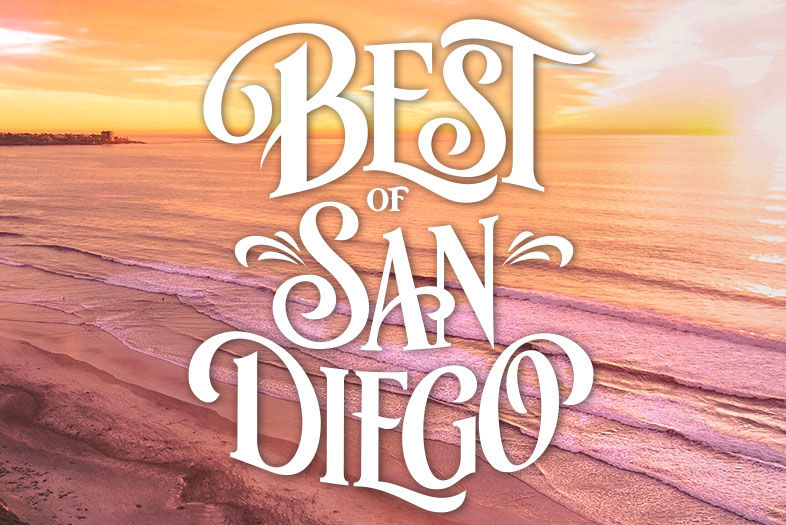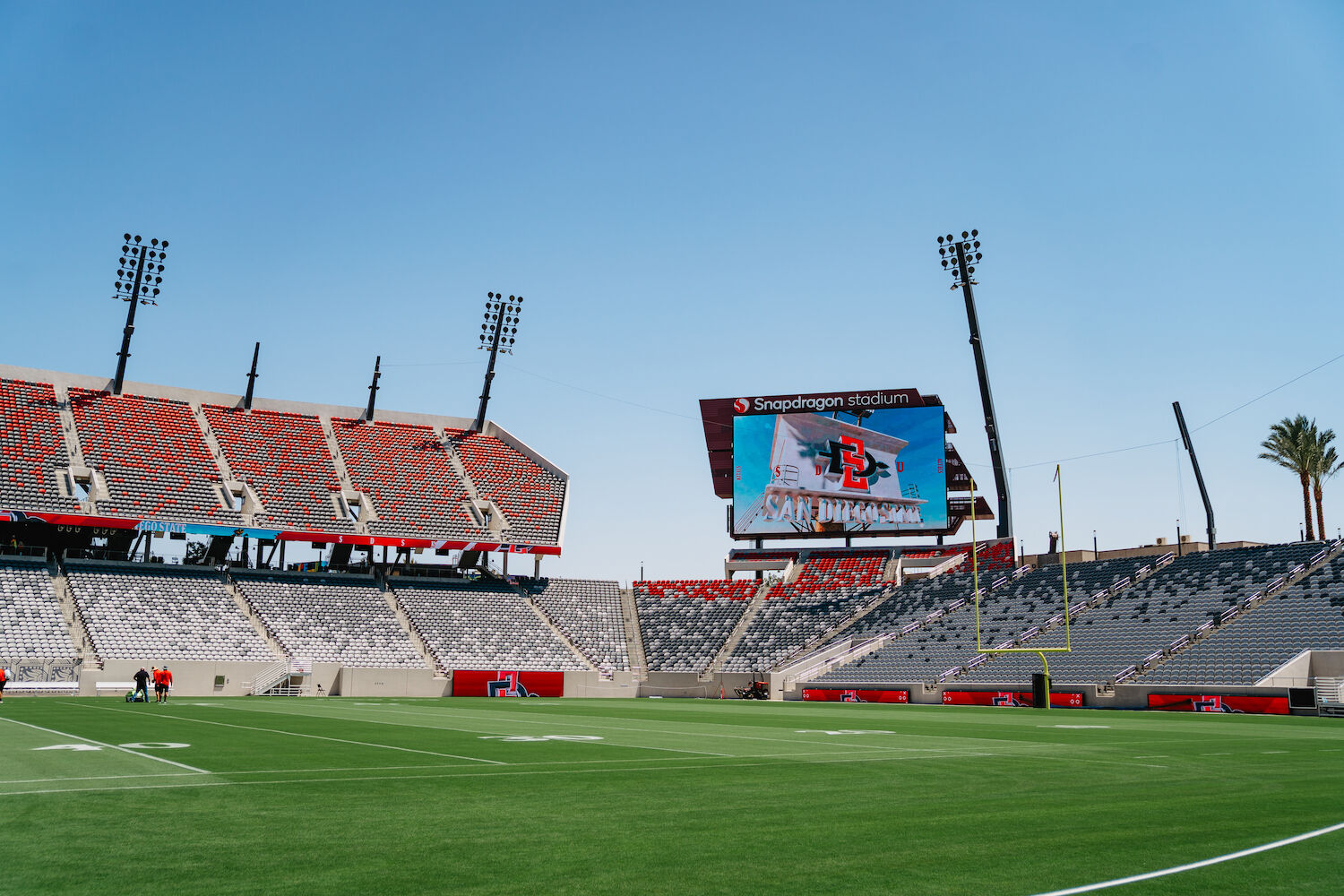
Snapdragon
Noelani Sapla
Anyone who’s driven through Mission Valley recently could not have missed it: A structure resembling an open jaw, with light towers jutting into the sky like electric guitar heads.
No, this isn’t a recreation of Mad Max: Fury Road. It’s Snapdragon Stadium, the brand-new home to San Diego State University football, San Diego Wave FC soccer, concerts, and other events.
I talked to prominent supporters of the teams before and during a stadium unveiling. They are fired up to move into their new home field.
“I am so excited that Division I women’s soccer will be part of the new stadium from day one. It’s so cool,” says Googie Daniels, president of Sirens SG, the supporters’ group of San Diego Wave Fútbol Club.
Tanner Askey, a San Diego State student and leader of The Show student section, is equally excited. He thinks it’s “absolutely sick. It blew my expectations out of the water.”
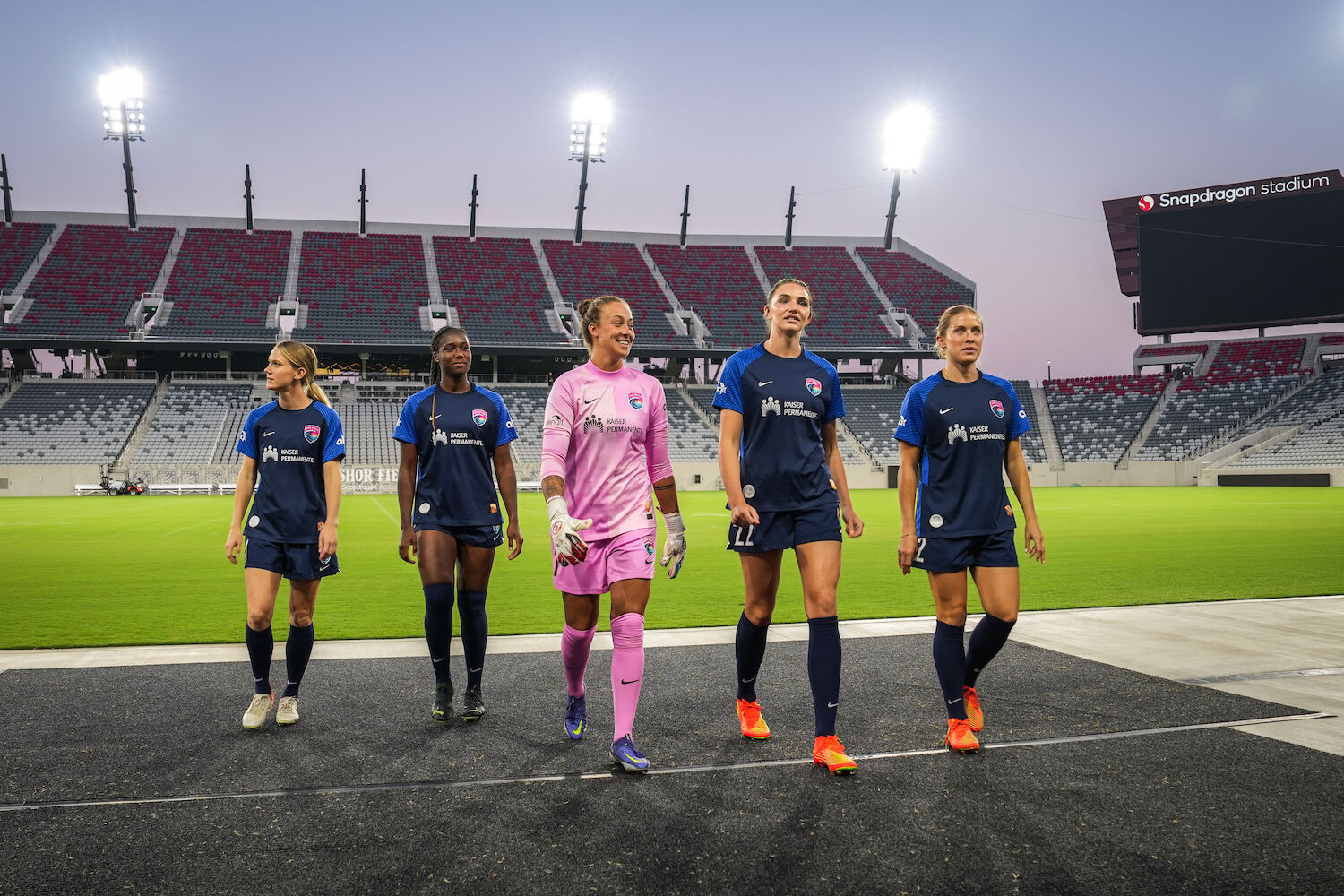
Wave FC
Courtesy Wave FC
That “sick” new stadium marks a revival of the long-neglected location. The previous tenant, the former San Diego/Jack Murphy/Qualcomm/SDCCU Stadium, hosted three Super Bowls, two World Series, two MLB All-Star Games, the annual Holiday Bowl, a monster truck extravaganza or two—along with some notable triumphs and countless heartbreaks for the Padres and Chargers.
The DNA of the old stadium is embedded in the new one, physically and spiritually. Ninety percent of the former building was reused and recycled—including 210,000 tons of Jack Murphy Stadium concrete that were crushed for the foundation. A statue of Jack Murphy himself, the sports writer whose advocacy ushered in the modern era of San Diego sports, stands sentry with his dog Abe near the northwest entrance.
Snapdragon is the centerpiece of SDSU Mission Valley, a future western campus of the university. The project will include housing, a hotel, retail spaces, an Innovation District, and more than 80 acres of parks and open space, including a 34-acre River Park. The development will eventually enable SDSU to add up to 15,000 additional students.
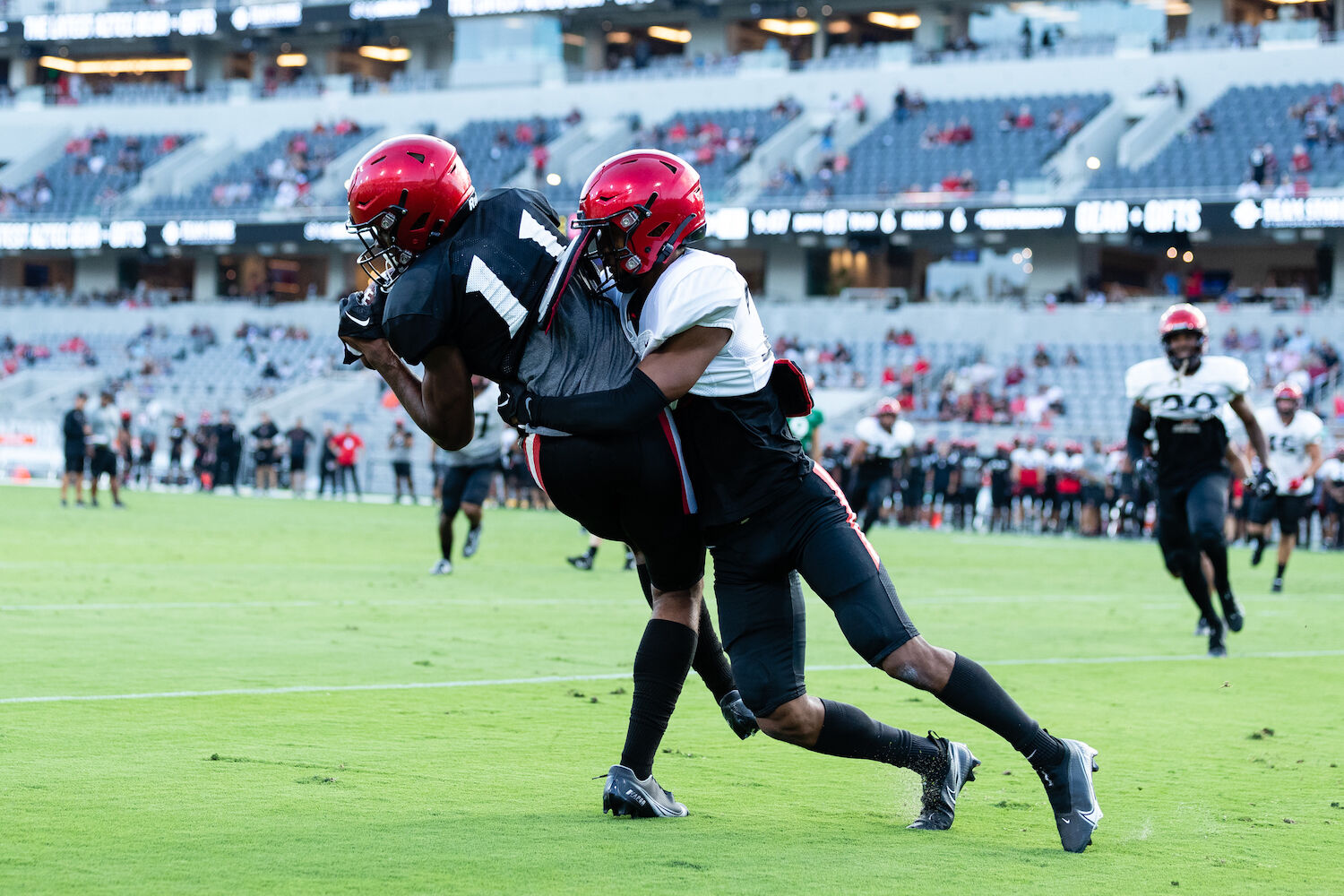
SDSU scrimmage
Derrick Tuskan
San Diego State earned the right to purchase the site through a voter referendum in 2018 when a citywide measure won a resounding vote over a competing soccer stadium proposal from private investors. Local tech powerhouse Qualcomm paid $45 million over 15 years to name the stadium after its mobile technology platform (though, for you poets, Snapdragon is also the name of a perennial flower native to San Diego). The new football stadium is on par with other world-class soccer temples.
The field is designed to accommodate a regulation international soccer pitch. San Diego State would love to partner with a future MLS franchise, and the stadium has been designed to incorporate canopies in the future to create an atmosphere like that of Europe and modern American soccer stadiums. Overhanging canopies are a roof over seating areas which, in addition to sheltering fans from the California sunshine, would help to reflect noise back onto the field.
“We took a canopy into consideration when we designed the building,” says Derek Grice, Executive Associate Director of Athletics for Mission Valley Development at SDSU. “We created voids and super columns in the four corners that would allow us to build a canopy should that be desired in the future.”
Snapdragon’s seating bowl starts close to the field, immediately rising at a steep angle to keep fans close to the action. All seating is chair-backed with no bleachers, which is unique for a college stadium. After being exiled in an elevated corner at the former stadium, the student section was given prime placement. The Show (the name of SDSU’s student section) is now in the field-level north end zone.
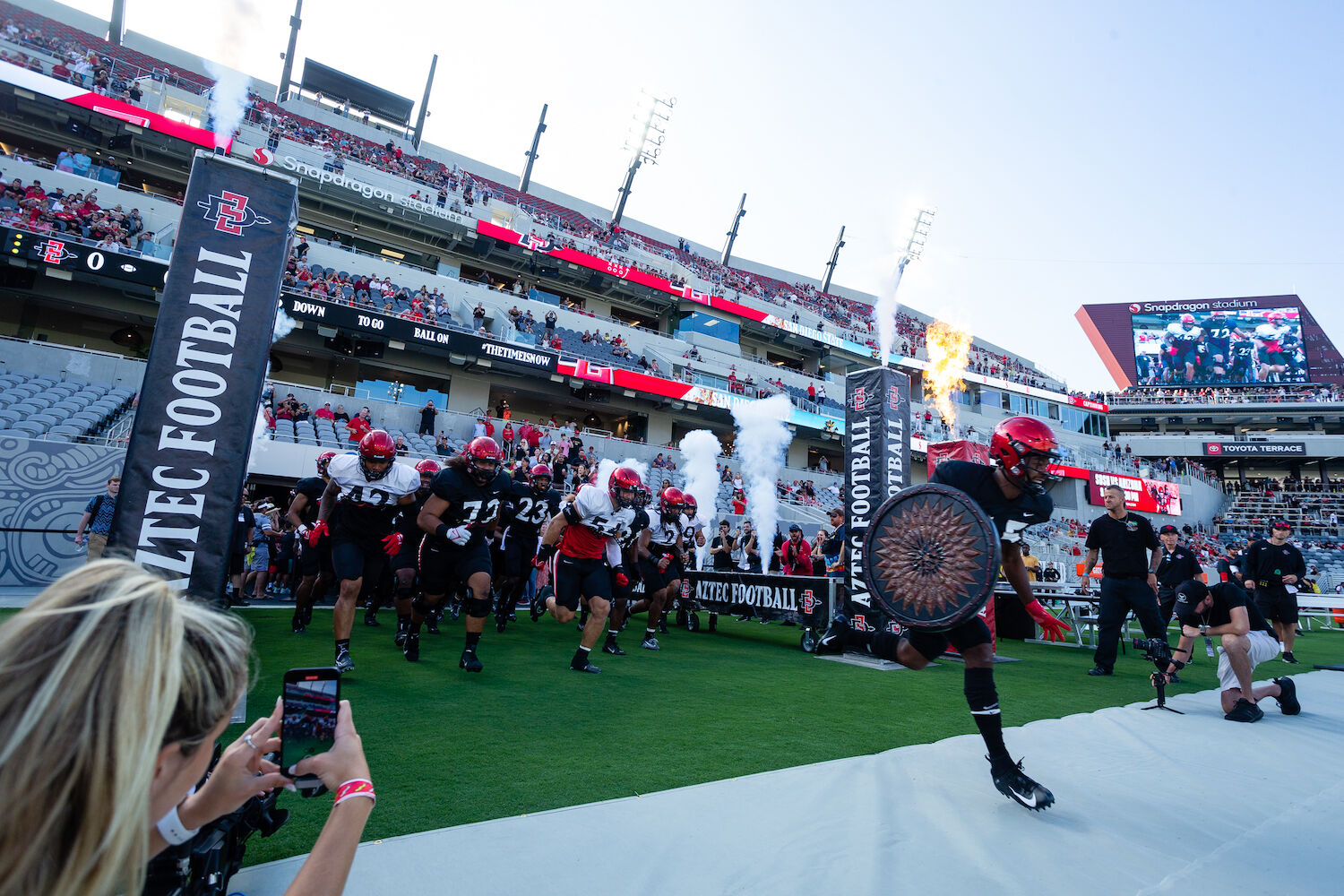
SDSU Football
Derrick Tuskan
Plush private suites and premium club spaces—the main revenue drivers for most sports stadiums—will attract alumni and local corporations. A “hype tunnel” runs alongside the Field Club, giving fans an up-close look at the players running onto the field. A unique seating area in one corner features metal countertops and office-like rolling chairs.
The design is distinct and quirky. The Piers social area—featuring a cantilevered slab that extends out over the seating bowl—is a nod to our oceangoing lifestyle. Trapezoidal angles conjure Mesoamerican architecture, and seat colors are arranged in a randomized pixelated pattern.
Art and features around the facility echo the heritage of the site, located a short distance from the first California mission, which itself had been the Kumeyaay village of Nipaguay, and Mission Valley’s more recent history of dairy farming is also referenced. Local artists Chris Konecki, Celeste Byers, Channin Fulton, Neil Shigley, Nathaniel Hall, and others contributed paintings, murals, sculptures, and other works to the stadium.
Grice says he’s “fortunate to be part of something as transformational” as he thinks the stadium project will end up being. He’s excited for “not only what the stadium itself is going to do for the community and for our athletic program, but for what this 166-acre development is going to do for San Diego.”
PARTNER CONTENT
The swath of Mission Valley land continues its evolution. Gone are pro teams, expanses of asphalt, and years of civic turmoil. Coming is a dynamic university campus with a new stadium as its cornerstone. A river runs next to it, connecting the city with its past, present, and future.
